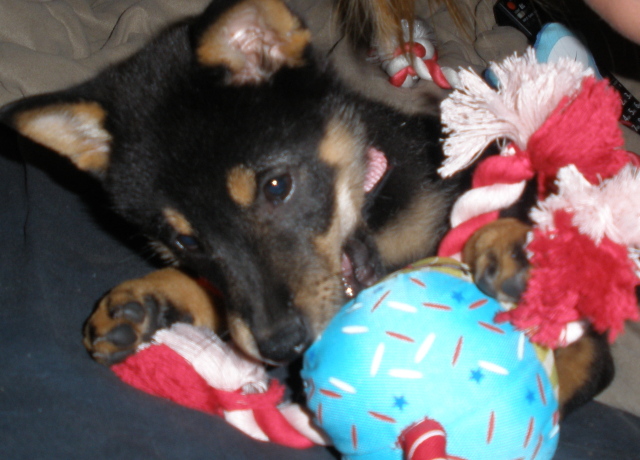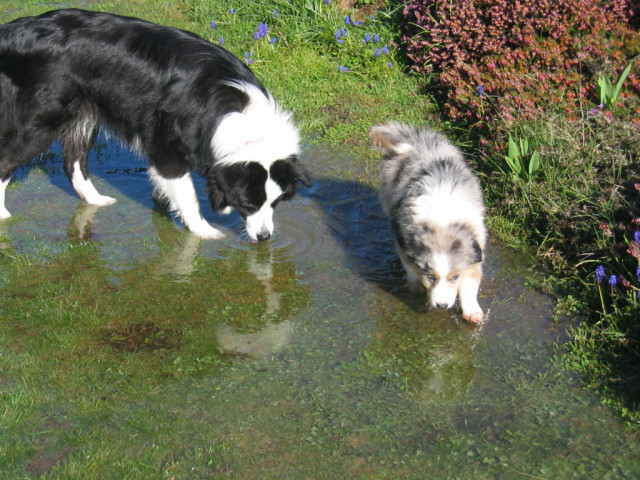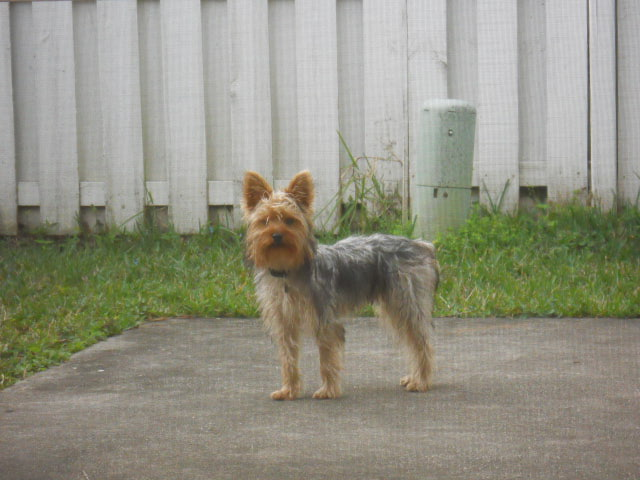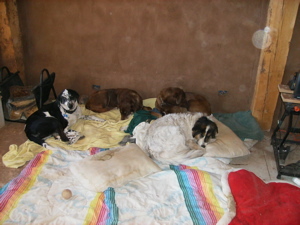QuestionQUESTION: Thank you for reading my challenge. Most of the times, when another dog approaches and they get close to meeting, my little girl will - 9 out of 10 times - bark, lunge and growl at the other dog. Of course, the other owner backs away and leaves. I've read many blogs about what to do and here's what some say: 1) just walk past the other dog and never have them meet - 2) turn around and walk in the opposite direction 3) pull or tug back on the leash, put some slack in to it, and try again to meet the other dog 4) put my dog in a sit position, and the second I see her about to go in to her mode, either hit the air horn, or say something loud and sharp like "hey" or "stop" or "leave it" - so she's distracted, and then I can redirect. She's a rescue, very limited socialization; we do give her 1/2 days of day care 1 or 2 times a week at a terrific place . Having said all of this, it's not that I'm frustrated, but more that I'd love to solve this meeting other dogs issue. However, I'm starting to believe there's something, again, in her DNA that will not change this. I do see that most of all the other dogs on walks do bond when they meet another dog, even if it's only for 3 seconds. Can you Please share your technique or correction method to help me. I'm also wondering if this is simply in my little girl's DNA, and that it might not be possible to solve. Thanks much Dr. Connor. I really want my little girl to meet other dogs, but she has to behave. I'm very open to trying any and all new techniques. Thank you Dr. Connor
ANSWER: DNA has nothing to do with this. Although breed type can predispose a dog to certain behaviors (strong social statement, guarding, etc.), this is almost always a problem with socialization. When your dog barks/lunges/growls and other dogs' owners walk away, your dog is learning that barking/lunging/growling "works". What the real motivation behind her behavior is I cannot see from here.
NEVER punish or reprimand your dog when she demonstrates this behavior. I can't tell you what her motivation is: some dogs present in apparent 'dangerous' behavior when meeting other dogs on leash but it turns out to be pure excitement or even fear. Because I can't SEE it I can't determine what the motive/trigger is. Asking her to "sit" on command as another dog approaches is like asking a surfer to ignore a fin in the water: because you don't and can't KNOW (without professional observation) what the dog is responding to (and why), you are adding to the stress of the situation. What OTHER dogs do during meet/greet has nothing to do with THIS dog. Your dog does NOT have to "meet" other dogs on leash (and leash restraint is most likely the problem); you report that she goes to day care twice weekly and I assume no one has declared her "dangerous" or "threatening" (and don't forget you should be able to DROP IN ANY TIME UNANNOUNCED to be certain your dog REALLY IS INTERACTING with other dogs in a peaceable manner). Leash restraint changes the "rules of engagement" dog to dog. YOUR response to her reaction can seriously increase her (problematic) reaction.
Develop a "come along" signal: use that phrase (or a special word you create), circle left (with dog close at left side), as she catches up to you (a second or two) pop high value food reward into her mouth (chicken, hot dog, cheese: tidbit), circle right (dog will then be close on your right side), as she catches up (and gives "attention"), food reward, stop, ask for "sit", heavily food reward, go on your merry way. Asking for "attention" is explained by Dr. Ian Dunbar here:
http://www.youtube.com/watch?v=g8dC8-U1BT4&feature=more_related
Your dog will LEARN TO WATCH YOU and will begin to understand that paying "attention" earns high reward. In situations where she is unable to overcome her emotional response, circling left, then right, changes brain wave patterns and will engage her cognition (because you have TAUGHT her that this behavior earns reward). The "sit and stay" dog to dog is a "meet and greet" and requires that THE OTHER DOG UNDERSTAND THE PROTOCOL. This is impossible on the street. You cannot control the other dog and may not be able to interpret its body language quickly enough to intervene in your own dog's response.
If you live in a sophisticated environment (i.e., not out in the woods), you might be able to find a "growl class". This is conducted by an experienced and heavily credentialed positive reinforcement trainer and your dog's reaction to other dogs on leash can be fully evaluated. With the right group leader, you might easily find a solution. Ask for references and OBSERVE a class or two. If you are not comfortable with the approach, don't participate.
---------- FOLLOW-UP ----------
QUESTION: Dear Dr. Connor, thanks for taking time to get back to me. I am going to look for a growl or leash aggression class. Until I do that, is it your best recommendation to simply forget about my girl meeting other dogs while on a walk ? Thanks very much.
AnswerUse techniques suggested (develop "attention" outdoors, circle, etc.) to change the dog's immediate response (now: lunging/barking) which will slowly make new associations with the approach of another dog. Do not go out of your way to avoid other dogs since your dog's reaction will be immediately associated with your change of direction (the dog will think its reaction valid, will confuse social signals, will react to your anxiety, now you really have a problem). If there are dogs you KNOW are "safe" (trustworthy, will not engage in fighting), circling and asking for "attention" immediately prior to letting your dog go forward to greet will help your dog to learn to be CALMER and will also affect the meeting between the dogs, since the other dog will be responding to the body signals your dog is giving. Boisterous greeting (barking, lunging) is not a problem in itself, it's an emotional state (leash restraint often causes this) and can be changed so long as the dog's perception of events is slowly associated with his/her calm state and performance of "attention" routines.

 My Shiba Inu
Question
Lola
I bought a registered Shiba Inu puppy fro
My Shiba Inu
Question
Lola
I bought a registered Shiba Inu puppy fro
 Dog in Heat?
QuestionLily and Jorge
QUESTION: Hello,
We have
Dog in Heat?
QuestionLily and Jorge
QUESTION: Hello,
We have
 agressive silky terrier
Question
Lucas 1 year old
Hi Jennifer:
I have a
agressive silky terrier
Question
Lucas 1 year old
Hi Jennifer:
I have a
 Sudden aggression within pack after a death
Question
Sudden aggression in o
We have an approximatel
Sudden aggression within pack after a death
Question
Sudden aggression in o
We have an approximatel
 Post bladder surgery potty training for INDOORS!
QuestionTiki
QUESTION: Dear Dr. Connor,
My 10 ye
Post bladder surgery potty training for INDOORS!
QuestionTiki
QUESTION: Dear Dr. Connor,
My 10 ye